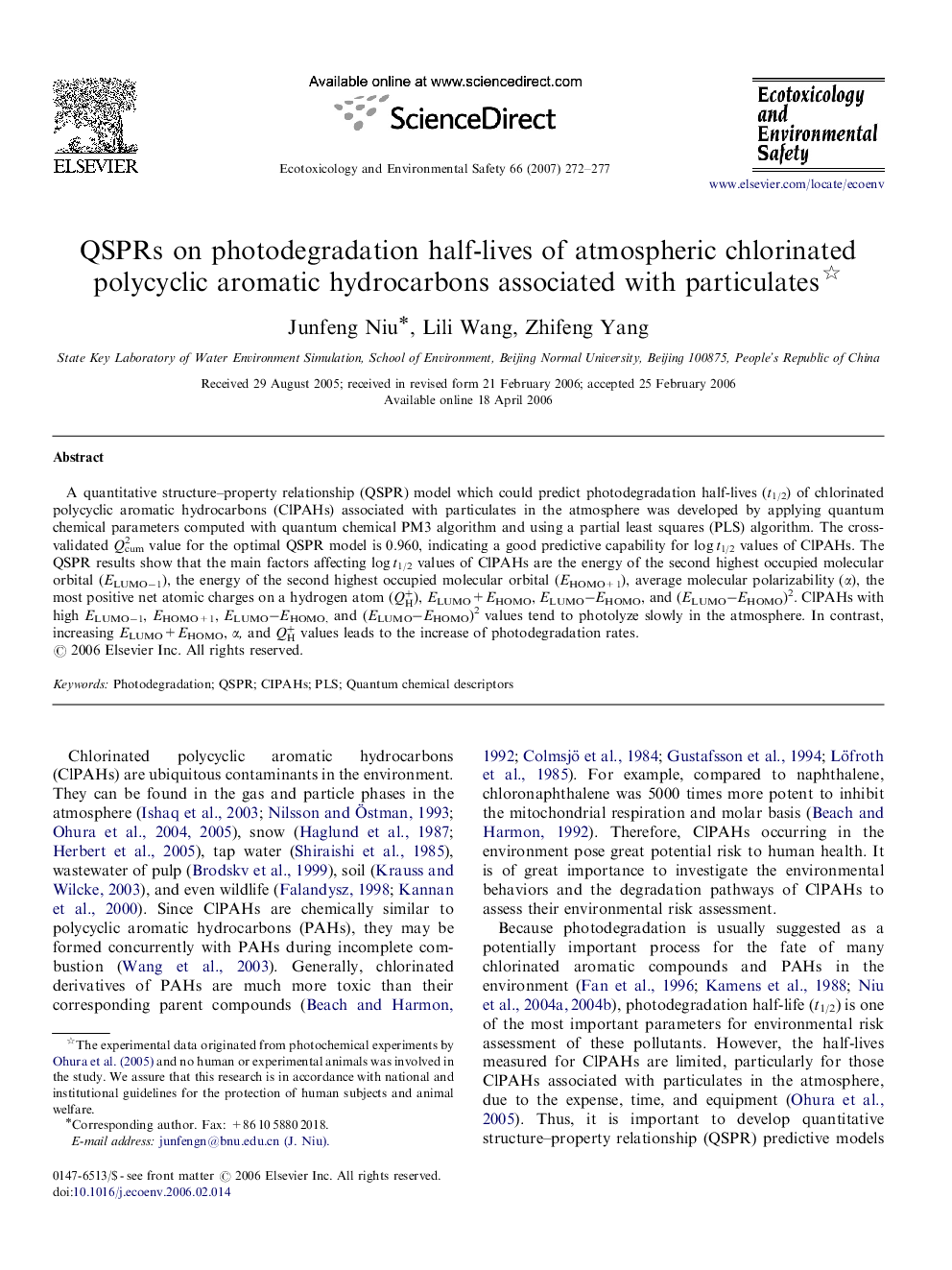| Article ID | Journal | Published Year | Pages | File Type |
|---|---|---|---|---|
| 4422422 | Ecotoxicology and Environmental Safety | 2007 | 6 Pages |
A quantitative structure–property relationship (QSPR) model which could predict photodegradation half-lives (t1/2) of chlorinated polycyclic aromatic hydrocarbons (ClPAHs) associated with particulates in the atmosphere was developed by applying quantum chemical parameters computed with quantum chemical PM3 algorithm and using a partial least squares (PLS) algorithm. The cross-validated Q2cum value for the optimal QSPR model is 0.960, indicating a good predictive capability for log t1/2 values of ClPAHs. The QSPR results show that the main factors affecting log t1/2 values of ClPAHs are the energy of the second highest occupied molecular orbital (ELUMO−1), the energy of the second highest occupied molecular orbital (EHOMO+1), average molecular polarizability (α ), the most positive net atomic charges on a hydrogen atom (QH+), ELUMO+EHOMO, ELUMO−EHOMO, and (ELUMO−EHOMO)2. ClPAHs with high ELUMO−1, EHOMO+1, ELUMO−EHOMO, and (ELUMO−EHOMO)2 values tend to photolyze slowly in the atmosphere. In contrast, increasing ELUMO+EHOMO, α, and QH+ values leads to the increase of photodegradation rates.
